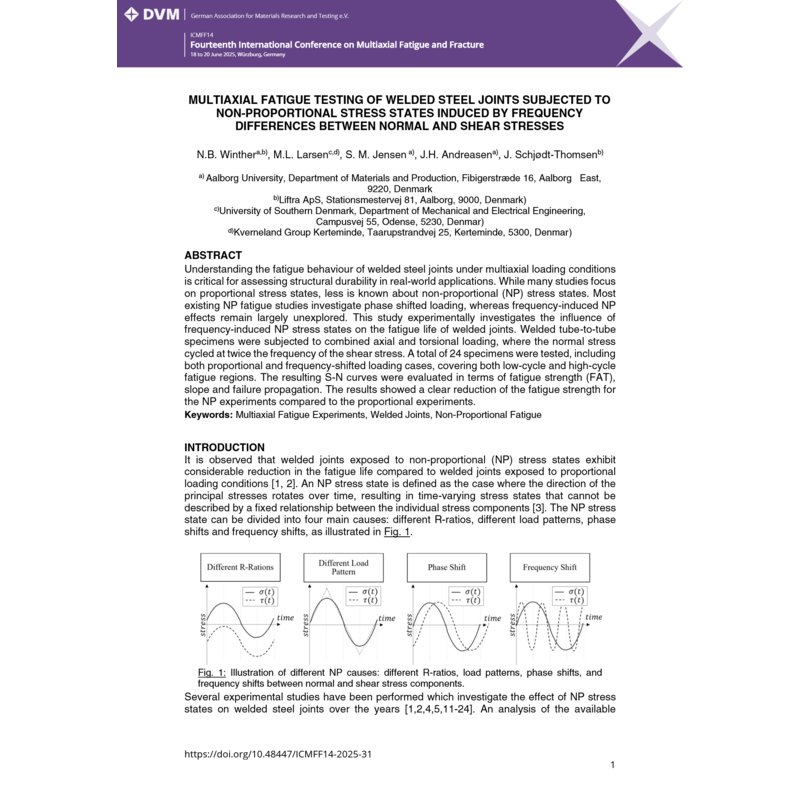- Online only



Understanding the fatigue behaviour of welded steel joints exposed to multiaxial stress states is essential for predicting the structural durability in real-world applications. While considerable research has focused on proportional stress states, there is a gap in understanding non-proportional (NP) stress states, particularly those caused by variations in stress frequencies. NP stress states arise when the principal stress direction changes over time [1]. The rotation of the principal stresses introduces additional complexity into the fatigue analysis and has been shown to significantly reduce the fatigue lives of welded steel joints [3, 4]. Although much research has been conducted on NP fatigue in welded joints, several uncertainties still need to be addressed. Most studies on NP…

Datenschutzbedingungen (bearbeiten im Modul "Kundenvorteile")

Lieferbedingungen (bearbeiten im Modul "Kundenvorteile")

Rücksendebedingungen (bearbeiten im Modul "Kundenvorteile")
Understanding the fatigue behaviour of welded steel joints exposed to multiaxial stress states is essential for predicting the structural durability in real-world applications. While considerable research has focused on proportional stress states, there is a gap in understanding non-proportional (NP) stress states, particularly those caused by variations in stress frequencies. NP stress states arise when the principal stress direction changes over time [1]. The rotation of the principal stresses introduces additional complexity into the fatigue analysis and has been shown to significantly reduce the fatigue lives of welded steel joints [3, 4]. Although much research has been conducted on NP fatigue in welded joints, several uncertainties still need to be addressed. Most studies on NP fatigue examine cases where phase shifts are introduced between normal and shear stresses, with findings indicating fatigue life reductions by a factor of up to four or more [3]. While it is well established that NP stress states with phase-shift can significantly decrease fatigue life, similar effects may also arise from frequency shifts, as this likewise initiates a rotation of the principal directions. However, in the literature only a few studies consider the NP effects from frequency differences. To address this gap, this current study seeks to experimentally evaluate the impact of NP stress states induced by frequency differences between the dominating normal and shear stresses on the fatigue life of welded joints.
The experiments consist of welded tube-to-tube specimens subjected to combined tension and torsion loading in an MTS multiaxial test machine (see Fig. 1). During testing, the frequency ratio, is varied between 0.1 to 5, with special emphasis on ratios near 1.0 to investigate the effect of small differences between the loading frequencies. By varying the loading frequencies, the effect of various frequency ratios can be mapped and used for more accurate fatigue assessment.
The test campaign is a continuation of the study published in [4]. The results from the tests and the following analysis will be presented at the ICMFF conference.